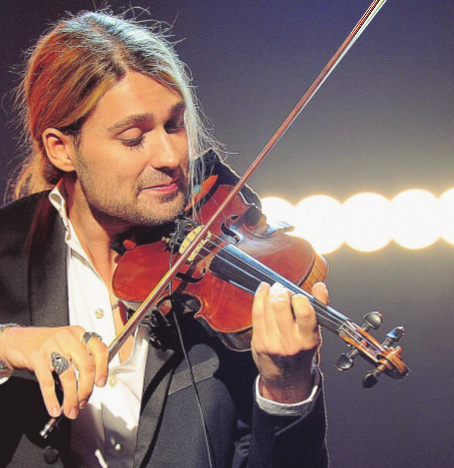When the exceptional German violinist David Garrett plays his instrument, there is no one in the audience who can escape the enchantment of his music. Just as the notes flow through the listener, the artist becomes one with his harmonies.
Paying attention to posture is often overlooked by both violinists and audiences – but take a closer look and consider how many hours a day must be spent practicing in such a contorted position! Add to this the tension and stress. It’s no wonder that violinists, as well as other string players, often suffer from chronic pain in their wrists, upper arms, shoulders, and cervical spine. According to medical experts in Freiburg, Germany, at least 70 percent of orchestra musicians are affected by posture-related injuries, and 13 percent, more than one in ten, have to give up their careers due to these ailments!
Also frequently described are: Temporomandibular joint dysfunctions in violinists. Tooth changes and nerve compression injuries caused by mouthpieces in wind players, back and wrist problems in pianists.
In Germany, a new specialty, music medicine, is currently emerging. In Austria, pain specialist and neurosurgeon Dr. Reinald Brezovsky recently founded a health portal specifically for musicians, singers, and dancers. This summer, the inaugural symposium took place at the House of Music in Vienna (another is planned for the autumn), where medical experts, musicians, and trainers, including the administrator of the Ballet Academy of the Vienna State Opera, Peter Rille, spoke.
Better researched are the strains faced by dancers. Typical occupational diseases include injuries to the ankle, nerve compression on the inner side of the foot, fractures of the toes and metatarsus, strains/tears of lateral and cruciate ligaments as well as the meniscus, and chronic overuse of the lower back. Tap dancers, in particular, put a lot of strain on the Achilles tendon, and cartilage damage in the knee area can occur relatively early.
Even in training, there are hardly any performances that are completed without pain.
“In care and treatment, cold red light and high-tone frequency therapy have proven effective. The former (Repuls) influences proteins in the tissue with a wavelength of 634 nanometers associated with inflammation processes and improves regeneration processes. This helps in combating inflammation. High-tone frequency alternating current applications promote blood circulation, muscle function, and mobility, especially after surgeries,” reports Dr. Brezovsky.

